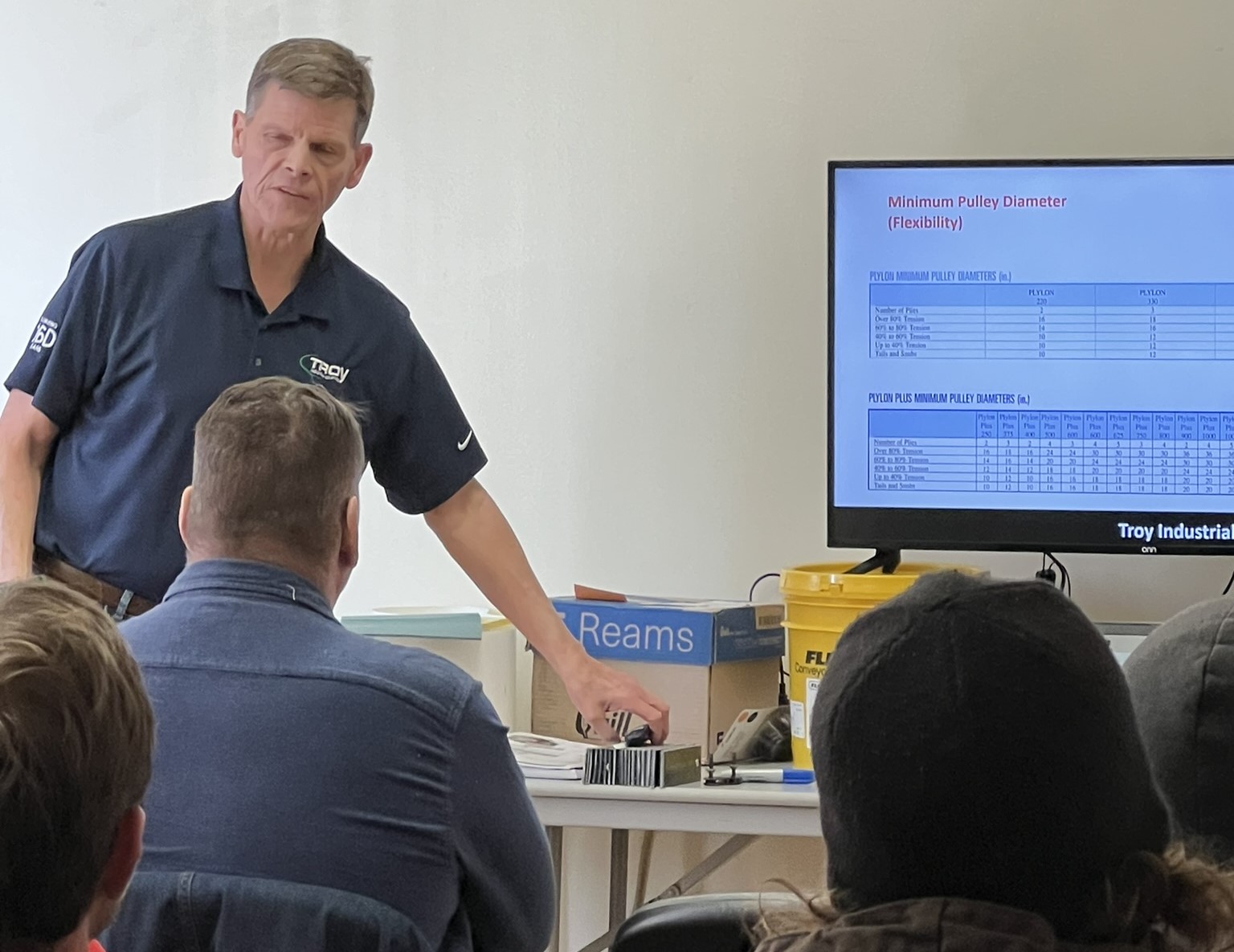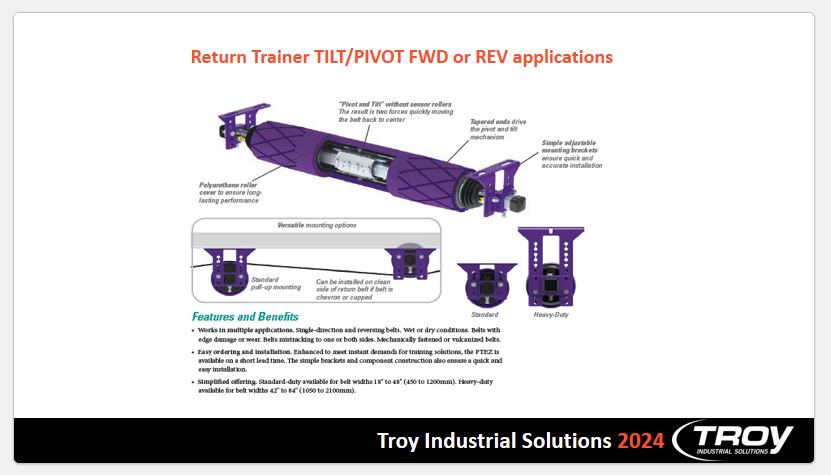Training Idlers:
Your Conveyor Belt’s Best Friend
In the material handling world, conveyor belts are the unsung workhorses that keep industries running smoothly. These systems ensure the flow of materials, connecting production lines and distribution centers with precision and reliability. While conveyor belts are celebrated for their innovative designs and durable materials, a lesser-known component plays a crucial role in their sustained performance: the idler. As part of Troy Industrial Solutions’ 3 T’s (Track/Train and Troubleshoot Conveyor’s and Belt Applications) Training Days, Duncan Rounds, TIS Product Manager explains Training Idlers.
 Understanding Idlers: The Backbone of Conveyor Belts
Understanding Idlers: The Backbone of Conveyor Belts
Idlers are cylindrical rollers strategically positioned along the conveyor belt’s path. They serve two primary functions:
- Support: Idlers play a crucial role in the conveyor system by providing essential support to the belt. They help ensure that the weight of transported materials is evenly distributed, which minimizes friction and wear on the belt. This extends the belt’s lifespan and enhances operational efficiency, contributing to a smoother and more reliable material transportation process.
- Training: Within the realm of idlers exists a specialized category known as training idlers. Unlike conventional idlers, which mainly offer support, these training idlers take on a more active role by guiding the belt. Through their intervention, they rectify misalignments and ensure consistent belt tracking. This hands-on approach to belt management is pivotal in upholding conveyor belts’ ideal alignment and efficiency.
The Critical Importance of Belt Alignment
Imagine a train track that’s even slightly misaligned. The consequences could be disastrous. Similarly, a misaligned conveyor belt can lead to a cascade of operational issues:
- Increased Wear and Tear: Misalignment causes the belt to rub against the conveyor structure, accelerating wear and tear on both the belt and idlers. This can result in premature component failure and costly replacements.
- Material Spillage: When a belt veers off course, materials can spill over the edges, creating a mess, wasting valuable resources, and potentially posing safety hazards.
- Energy Inefficiency: A misaligned belt requires more energy, increasing operational costs and reducing the system’s overall efficiency.
- Safety Risks: In extreme cases, belt misalignment can lead to belt damage, equipment malfunctions, and even accidents, jeopardizing workers’ safety.
Training Idlers: The Alignment Experts
Training idlers are the unsung heroes of conveyor belt alignment. Unlike standard idlers, which passively support the belt, training idlers actively interact with the belt to correct misalignments. They are equipped with a pivoting or tilting mechanism to adapt to the belt’s movement, gently nudging it back on track. This real-time correction is particularly valuable on the belt’s return side, where misalignment is common due to varying loads and operational conditions.
Types of Training Idlers
Training idlers come in various designs, each catering to specific alignment challenges:
- Conventional Carrying Training Idlers: These idlers address misalignment on the belt’s top side, where the material is carried.
- Conventional Return Trainers: Installed on the belt’s underside, these idlers correct misalignment on the return side.
- Tilt and Pivot Training Idlers: These versatile idlers combine tilting and pivoting actions to respond dynamically to misalignment in various operational scenarios.
Conclusion
Training idlers are more than just components; they are essential allies in pursuing peak conveyor belt efficiency. Their role in ensuring proper belt alignment transcends operational necessity, offering a strategic advantage in mitigating common challenges and enhancing safety.
Investing in training idlers is a wise decision for businesses that rely on the seamless operation of conveyor systems. It’s not just about improving equipment performance; it’s about securing long-term benefits in operational efficiency, cost savings, and workplace safety. By partnering with industry experts to harness the power of training idlers, you can unlock a new level of conveyor system performance and achieve operational excellence. For more information on training idlers or FAQ’s about common conveyor belt problems, visit Troy Industrial Solutions.
.










